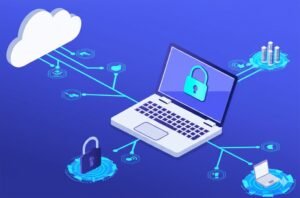In today’s digital age, remote work has become a norm across industries, including cybersecurity. With advancements in technology and tools, many cybersecurity professionals now perform their duties from anywhere in the world. This flexibility not only benefits employees but also allows organizations to tap into a global talent pool. But how does remote cybersecurity work, and what are the key considerations? Let’s explore this topic in detail.
Key Roles in Cybersecurity That Can Be Done Remotely
Cybersecurity encompasses a wide range of roles, many of which can be performed remotely. Below is a table summarizing some of these roles and their responsibilities:
These roles demonstrate the versatility of remote cybersecurity work. Whether it’s monitoring threats or ensuring compliance, professionals can accomplish these tasks without being physically present in an office.

Tools and Technologies Enabling Remote Cybersecurity Work
To effectively perform cybersecurity tasks remotely, professionals rely on a variety of tools and technologies. Here’s a table highlighting some commonly used tools:
These tools allow cybersecurity teams to collaborate seamlessly, monitor systems in real time, and respond to threats efficiently—all from remote locations.
Benefits of Remote Cybersecurity Work
- Global Talent Pool: Organizations can hire experts from around the world, increasing diversity and expertise.
- Cost Savings: Reduced overhead costs for office space, utilities, and other resources.
- Flexibility: Professionals can work during non-traditional hours, which is often necessary for incident response.
- Scalability: Teams can quickly adapt to changing demands without the constraints of physical office space.
- Improved Productivity: Many professionals report higher productivity when working remotely due to fewer distractions.
Challenges of Remote Cybersecurity Work
While remote work offers numerous advantages, it also comes with its own set of challenges:
- Secure Access: Ensuring secure connections to sensitive systems and data is critical.
- Communication Gaps: Miscommunication can occur without proper collaboration tools and protocols.
- Distractions at Home: Remote workers may face interruptions that affect their focus.
- Isolation: Some professionals may feel disconnected from their teams, impacting morale.
- Regulatory Compliance: Certain industries have strict rules about remote work and data handling.
Best Practices for Remote Cybersecurity Work
To overcome the challenges of remote cybersecurity, consider implementing the following best practices:
- Use Multi-Factor Authentication (MFA) : Require MFA for all remote access to systems.
- Encrypt Communications: Use encrypted channels for all data transfers and communications.
- Regular Updates: Ensure all devices and software are up-to-date with the latest patches.
- Zero Trust Architecture: Implement a zero-trust model where users and devices must continuously verify their identity.
- Secure Home Networks: Encourage employees to secure their home Wi-Fi networks with strong passwords and encryption.
- Training and Awareness: Provide regular training on phishing, social engineering, and other remote work risks.
- Incident Response Plans: Develop and test remote-friendly incident response plans.
Conclusion
Remote cybersecurity work is not only feasible but also highly effective when the right strategies and tools are in place. From monitoring threats to ensuring compliance, cybersecurity professionals can perform their duties efficiently from anywhere in the world. However, it’s crucial to address the unique challenges of remote work, such as secure access and communication gaps, to maintain operational effectiveness. By adopting best practices and leveraging advanced technologies, organizations can build robust remote cybersecurity teams capable of protecting their digital assets.

FAQs
Q1: Is remote cybersecurity work secure?
A: Yes, remote cybersecurity work can be secure if proper measures like MFA, encryption, and secure access protocols are implemented.
Q2: What tools are essential for remote cybersecurity?
A: Essential tools include SIEM platforms, EDR solutions, cloud security tools, and collaboration platforms like Slack or Microsoft Teams.
Q3: Can incident response be handled remotely?
A: Absolutely. Incident responders can use remote access tools and cloud-based platforms to detect, analyze, and mitigate security incidents.
Q4: Are there any risks associated with remote cybersecurity work?
A: Yes, risks include insecure home networks, communication gaps, and potential compliance issues. These can be mitigated with proper planning and tools.
Q5: How can organizations ensure compliance with remote cybersecurity work?
A: Organizations should adopt zero-trust architecture, provide regular training, and ensure all remote activities adhere to industry-specific regulations.


